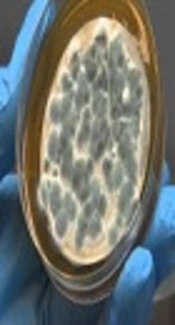Banknotes and coins are widely used throughout the world. They are exchanged and they come into contact with different environments and many different individuals during their circulation. Therefore, they can become contaminated with microorganisms and transfer bacteria across environments. Unhealthy conditions and unhealthy habits such as counting bills using saliva from the mouth to dampen the fingers can facilitate the transmission of microbial contamination (1, 2). These contaminations may be directly transmitted through contact with money by the hands or indirectly through exposure to food, water, or other objects (3). Based on some studies, the most commonly found microorganisms on the surfaces of banknotes and currency are Bacillus and Staphylococcus aurous species (4).
However, there is no evidence of any report of an outbreak of disease due to contaminated money (3). Referring to the literature, developing countries have the highest rates of money contamination. Vriesekoop et al. (2010) reported the contamination of coins and paper bills and found they were polluted with pathogenic agents such as Staphylococcus aureus, Escherichia coli and Klebsiella introbacterin (5). Also, in a similar study, about 93 species of bacteria belonging to Staphylococcus, Streptococcus, Enterobacter, Acinetobacter, Pseudomonas, Bacillus, Diptheroids, Klebsiella pneumoniae and Escherichia vulneris were detected on banknotes (6). Alemu (2014) reported that there was a bacterial contamination rate ranging from 60% to 100% on paper currency (7). Also, Alemu reported that the Bangladesh, India, Iraqi, Ghanaian, Saudi, Palestine, Mexico, Colombian, and South African banknotes and currency were contaminated with pathogenic and potentially pathogenic microorganisms. Thus, although there is sufficient information indicating money can transmit infections, the use of coins and banknotes in trading and business is a common occurrence. So, what should be done?
Uses of various types of credit cards in business and trading systems can decrease the number of transactions using banknotes and coins. Other suggestions are online shopping and using money counter devices instead of hand counting money.
